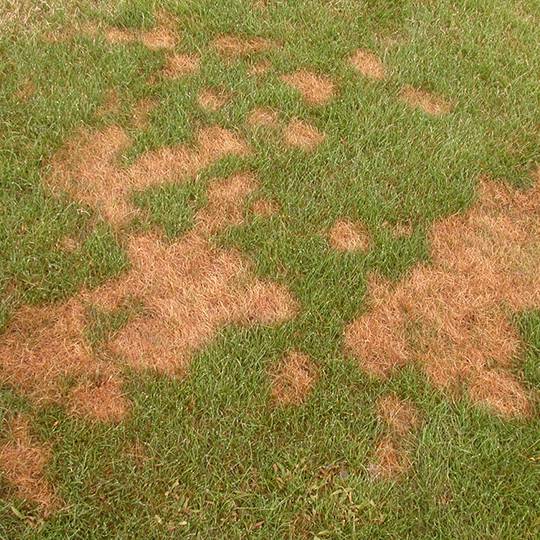Lawn Disease: How to Identify the Signs
Posted
March 9, 2017

Spring is coming. And with the warm weather it brings, there’s also an increased chance of your grass succumbing to lawn disease. Here’s a rundown of the most common lawn diseases in our area. Read on to learn the identifying features for each.
Brown Patch: patches of dead or dying grass. Brown in color with dark rings around them, these patches are often circular and can grow up to a few feet large.
Dollar Spot: a fungus that causes the formation of circular patches the size of silver dollars in warm, moist conditions.
Fairy Ring: this fungal disease causes discolored arc designs on a lawn. These arcs are dark green in color and grow at a faster rate than the rest of your grass.
Lawn Rust: begins as light patches that resemble normal grass. The light patches are caused by small yellow dots on the blades. These dots rupture, leaving behind a rust-colored dust.
Leaf Spot: also known as “melting out,” shows up in early spring as small yellow circles with dark centers on the grass blades. These circles continue to grow until the lawn takes on a yellow tint. This is followed by the melting out stage: large patches of discolored grass that form once the weather warms up.
Pink Snow Mold: circular pinkish-white patches of matted fungus on grass blades. This mold kills grass when the weather warms, leaving brown, dead patches in its wake.
Pythium Blight: dark, greasy-looking patches that develop gray mold, then turn to a yellowish color after drying out.
Red Thread: patches of reddish-pink grass with mycelium fungus (growths resembling threads) connecting and growing between the blades.
Slime Mold: patches of a dusty fungus (grayish, blackish, or yellowish in color) that coats grass blades.
Snow Mold: similar to pink snow mold, this is patches of grayish-brown matted grass. This fungal disease forms during winter and appears in spring.
Stripe Smut: also known as leaf smut. On close inspection, you’ll see narrow stripes growing on grass blades. These stripes then rupture and release spores that cause grass blades to curl and appear shredded.
Summer Patch: prevalent in hot weather, this disease consists of dead grass that grows in ring and crescent shapes. Summer patch destroys grass roots. A way to test for summer patch is to pull a patch of turf up by the root. If the grass comes up easily and the roots are a darker brown than usual, you’ve got summer patch.
We’ll Show Lawn Disease Who’s Boss
At Cardinal Lawns, we’ve dealt with—and defeated—every kind of disease. Contact us for a free inspection and estimate for a lawn program tailor-made for your lawn’s specific health needs. Don’t wait until your lawn succumbs to the ravages of lawn disease; call today at 614-808-4446.

Download Your FREE Lawn Disease Guide
Even the most manicured landscapes are susceptible to lawn disease. Take some time to learn about identification and removal before one takes over your lawn. This handy guide teaches you how to spot common lawn diseases as well as how to properly treat them.